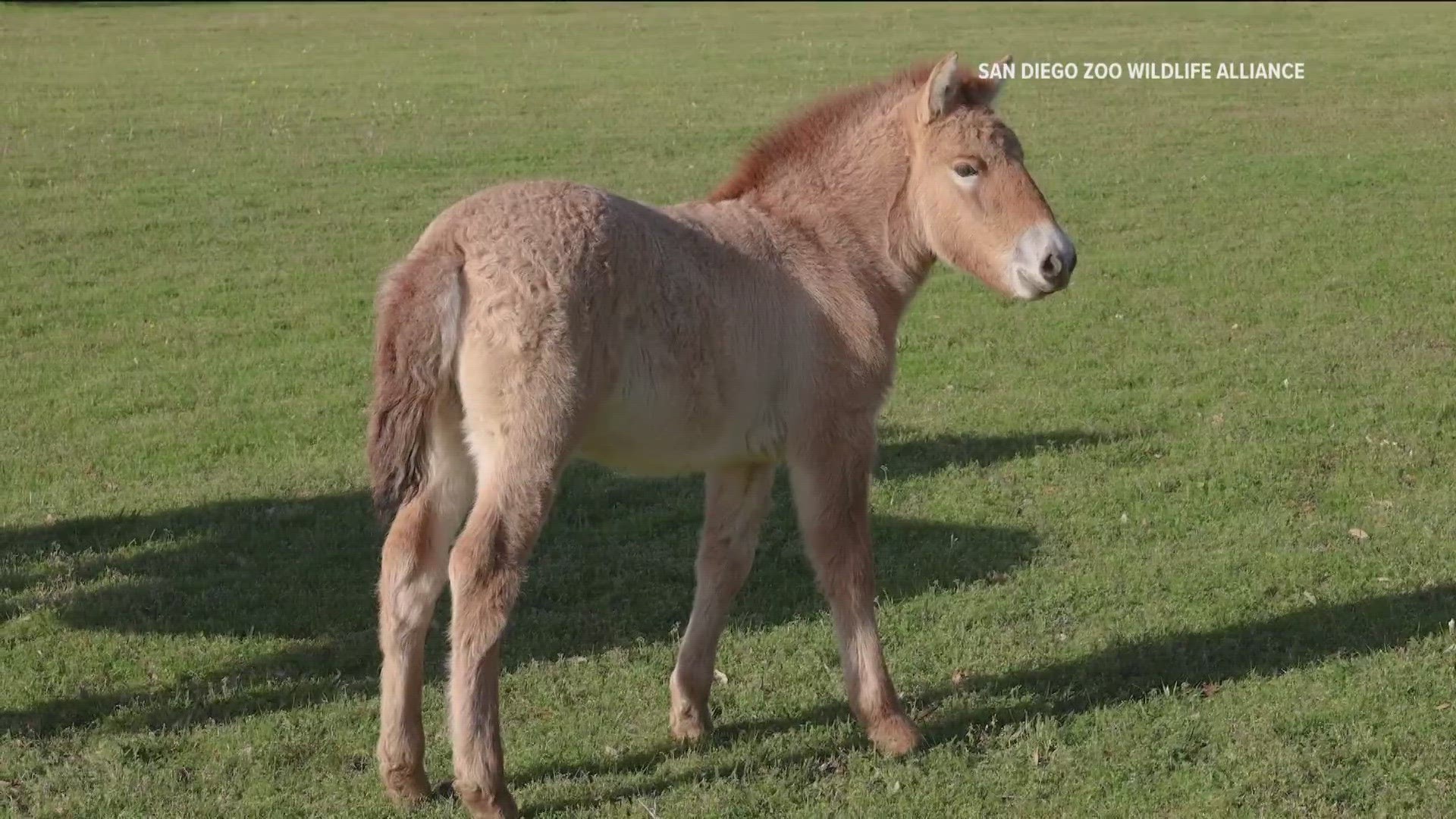SAN DIEGO — A cloned horse is getting ready to join the herd at the San Diego Zoo Safari Park.
The Przewalski horse is the world's second cloned horse of its kind to be born.
The endangered species was produced from DNA that was cryo-preserved in 1980 and was born in February.
With the help of the San Diego Zoo Global Frozen Zoo, the birth of this foal gives wildlife researchers hope that cloning can be a viable tool to restore genetic diversity. The second horse has not been officially named.
“It’s really a wonderful story about an amazing species,” said Oliver Ryder, Ph.D., Director of Conservation Genetics at the San Diego Zoo Wildlife Alliance. “It's really a new era in managing populations for sustainability and for their long-term persistence,” said Ryder.
The foal and his genetic twin, Kurt, who was born in 2020, are clones produced from skin cells from a male Przewalski that were cryo-preserved more than 40 years ago at the frozen zoo.
“These cells were frozen when Reagan was voted to be president to put things into perspective,” said Ben Novak, Lead Scientist at Revive & Restore.
He’s the program manager of biotechnology for Bird Conservation at Revive & Restore, a wildlife conservation non-profit.
The group partnered with the animal cloning company ViaGen Pets and Equine and San Diego Zoo Wildlife Alliance for the first and second Przewalski horse.
Novak was able to meet Kurt and hopes to meet the second horse as well.
“I met Kurt myself. Putting my hand on him, all of that cool science is there in my head buzzing, but it kind of melts away just for the experience that this isn't just a neat science experiment. This is something meaningful, to feel him breathe, to watch him run,” said Novak.
Researchers say formerly extinct in the wild, nearly all surviving Przewalski horses are in zoos and related to only 12 born in their native habitats in Central Asia.
They also say until the birth of the recent second Przewalski horse, cloning had only successfully produced a single individual of any endangered species.
“Both these horses show us we can go back into the past, and potentially clone more of those individuals, and completely redo some of the shortcomings of the past century to ensure another few million years of this species on the planet,” said Novak.
Kurt has been living at the San Diego Zoo Safari Park since 2021 with a mare named Holly.
The zoo says the second foal will eventually join Kurt and Holly to learn how to be a wild horse.
“We are going to wait for these boys to grow up because they have to become capable of being heard stallions which is no task for a young fellow,” said Ryder.
Kurt moved from Texas to San Diego when he was seven months.

